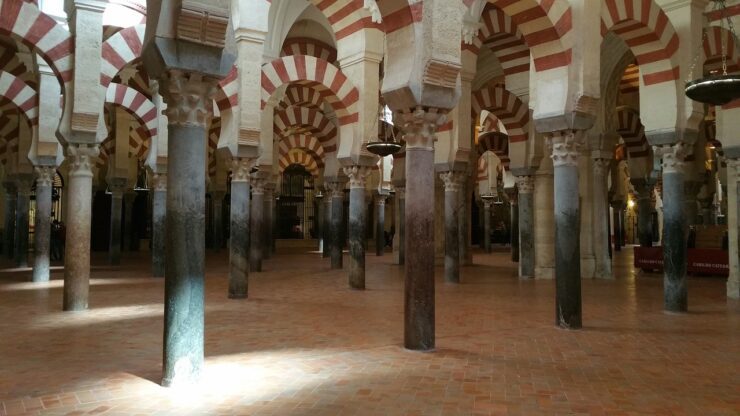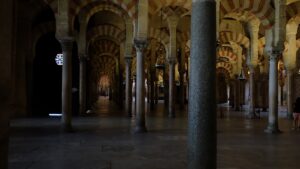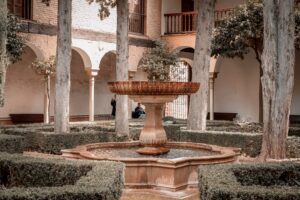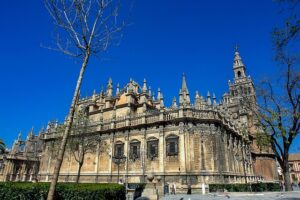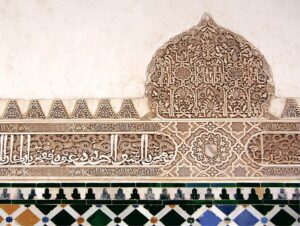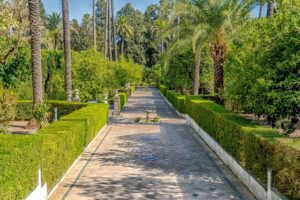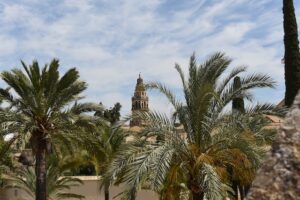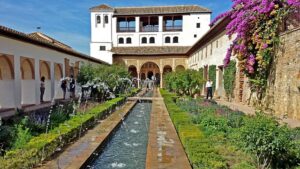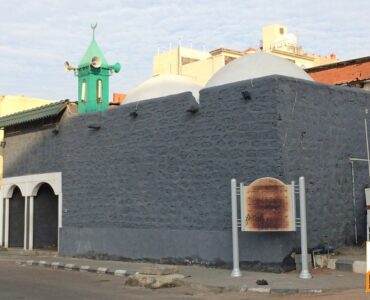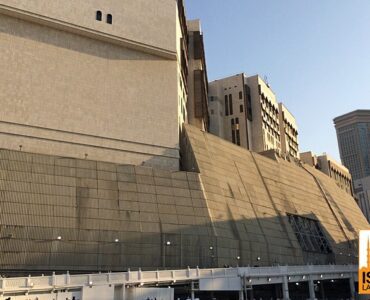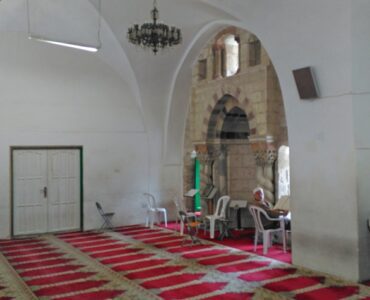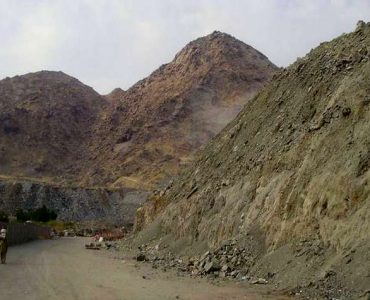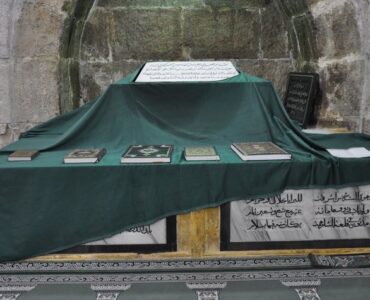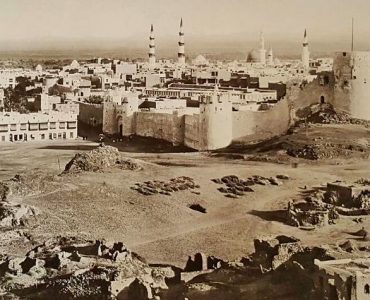If you think Spain is only famous for bullfighting and football, you are wrong. The centre of innovation and knowledge, Spain is home to many historical places that have witnessed the eight centuries-long Islamic rule on the Iberian Peninsula.
The enlightening period didn’t only introduce Spain to Islam, but it also inspired many cultural, agricultural, scientific, and architectural formations and discoveries.
Among these destinations, the Alhambra in Granada and the Great Mosque of Cordoba stand as masterpieces, representing the brilliance of the Arab mind.
Keep reading to learn about fifteen Islamic historical places in Spain.
History of Muslim Spain
The Islamic history of Muslims in Spain is a rich and complex tale that spans several centuries. Beginning in 711 CE, Muslim forces led by Tariq ibn Ziyad crossed the Strait of Gibraltar and quickly established their presence on the Iberian Peninsula.
The Muslim-led area was called Al-Andalus. Over the subsequent centuries, Al-Andalus flourished as a centre of cultural exchange, intellectual innovation, and architectural marvels.
It wasn’t only an area where the native Jews, Christians, Muslims, Arabs, and Amazighs (Berbers) connected, but it also bore witness to the rise of important religious personalities, pivotal urban centres, and the ascent and decline of several ruling dynasties.
The Umayyad Caliphate in Cordoba reached its zenith in the 10th century, showcasing advanced developments in fields like science, art, and philosophy.
However, the region eventually fractured into smaller states, which were later conquered by Christian forces during the period known as the Reconquista.
In 1492, the fall of Granada marked the end of Muslim rule in Spain, leading to the expulsion of Muslims who chose to remain steadfast in their faith.
Despite the end of their political dominance, the legacy of Muslims in Spain endures through architecture, language, and cultural influences that have left an indelible mark on the country’s history.
The Great Mosque of Cordoba (Mosque-Cathedral of Córdoba)
Constructed between 785 and 897 CE, the Great Mosque of Cordoba is one of the iconic and historically significant landmarks in Spain.
Situated in the southern Andalusia region within the boundaries of the city of Cordoba, Mosque-Cathedral of Cordoba features an expansive 856-column hypostyle prayer hall of onyx, porphyry, granite, marble, and jasper, and a beautiful Mihrab that is decorated with calligraphy and mosaics.
Over the centuries, the mosque underwent several expansions and modifications under different rulers.
The most notable expansion occurred under the rule of Abd al-Rahman II in the 9th century.
Additional sections, including new prayer halls and courtyards, were added to accommodate the growing Muslim population.
The mosque was converted into a cathedral after the Christian Reconquista of Córdoba in 1236.
This transition involved the construction of a Renaissance-style cathedral nave within the existing mosque structure.
Today, The Great Mosque of Cordoba offers exceptional Cordoba experiences. It is recognised as a UNESCO World Heritage Site.
The ticket price is 13 € per person. The perfect time to visit the Mosque-Cathedral of Cordoba is between 11 a.m. to 3 p.m.
Ancient Mosque in Spain
The Great Mosque of Cordoba is amongst the oldest, largest, and most special religious sites in the world after Masjid al-Haram (Makkah), Masjid al-Nabawi (Madinah), and the Blue Mosque (Istanbul).
The majestic architecture at this place symbolises Muslim empowerment during the Umayyad Era and the unique relationship between the Christians, Jews, and Muslims.
Mosque-Cathedral of Cordoba is known for its horseshoe arches, a red stone and brick column-filled prayer hall, a fountain-centred courtyard, and a minaret converted into a bell tower.
What Was the Capital of Muslims in Spain?
Originally ruled by Romans, Cordoba of Al-Andalus became the capital of Muslims (the Umayyad Caliphate) in Spain after the conquest.
The rich and diverse culture of Cordoba greatly contributed to establishing a flourishing Muslim civilisation.
Which City Was a Centre of Islamic Culture in Spain?
The city of Cordoba was a prominent centre of Islamic culture in Spain during the medieval period.
It reached its cultural zenith during the Islamic rule of the Iberian Peninsula, which lasted from the 8th to the 15th centuries.
Alhambra Palace
Situated in Granada, Spain, the Alhambra Palace is a 26 acres complex of gardens and fortifications originally built during the mid-13th century by the Nasrid Dynasty.
The name “Alhambra” is rooted in the Arabic words “al-qal’a al-hamra.” They translate to “the red fortress,” which likely references the reddish hue of the palace’s walls.
Featuring delicate geometric patterns, calligraphy, arabesques, and stunning decorative elements, the Alhambra Palace is a harmonious blend of different architectural styles, including Andalusian, Islamic, and Moorish influences.
In addition, the Alhambra Palace was a strategically important place as it allowed the rulers to have a bird’s eye view of the entire city.
It is a must-visit site. The ticket price is 19.09€ for adults. Some key sites of the Alhambra Palace that you must tour include:
- Nasrid Palaces: These palaces serve as the heart of the Alhambra complex. They feature well-decorated courtyards, stunning stucco work, colourful tiles, and beautifully carved wooden ceilings. The most famous of these courtyards is the Court of the Lions, known for its central marble fountain supported by twelve lion statues.
- Generalife Gardens: The Generalife Gardens are a series of terraced landscapes with lush greenery, vibrant flowers, and flowing water features. These gardens provide a peaceful retreat within the palace complex and offer stunning views of the surrounding area.
- Alcazaba: The Alcazaba is the oldest part of the Alhambra and serves as a fortress with defensive walls and towers. It offers panoramic views of Granada and the Sierra Nevada mountains.
- Palace of Charles V: This Renaissance-style palace was built within the Alhambra complex by the Holy Roman Emperor Charles V in the 16th century. Its architecture contrasts with the Islamic design of the Nasrid Palaces and showcases the evolving cultural influences in the region.
Which City of Arab Islamic Heritage Is in Spain?
Cordoba, a city located in the southern region of Islam, was an important centre of Arab Islamic heritage during the medieval period.
It was the capital of the Islamic Emirate and later the Caliphate of Córdoba, a significant cultural, intellectual, and economic hub in the Iberian Peninsula.
The city’s Great Mosque of Córdoba (also known as the Mezquita) is one of Spain’s most famous examples of Islamic architecture.
The Islamic influence is still visible in the architecture and layout of the city today.
Catedral De Sevilla
With an impressive architectural structure covering a total area of about 124000 square feet (11520 square metres), Catedral De Sevilla is the third-largest church in the world.
Nestled in the heart of Seville, Spain, Catedral De Sevilla is renowned for its grand, ornate interior, meticulously crafted glass windows, altarpieces, and numerous chapels.
The 341-foot (104 metres) tall Giralda Tower and the Tomb of Christopher Columbus are the most notable features of Catedral De Sevilla.
Beyond the entrance, within the grand monument is La Capilla Real, an area dedicated to the royal family of Spain that features beautiful sculptures, altarpieces, and tombs of various monarchs. The regular ticket price is 8 €.
The construction of the Seville Cathedral began in the 15th century after the Reconquista (the Christian reconquest of Spain) from the Moors.
It was built on the site of a former mosque. The cathedral’s construction incorporated elements of both Gothic and Renaissance architectural styles.
Which City in Spain Has the Most Islamic History?
Andalusia, a region in southern Spain, has the richest Islamic history in Spain due to its association with the Alhambra and Nasrid Dynasty.
Cities like Granada, Cordoba, and Seville have a rich Islamic heritage and offer opportunities for Muslim travellers to explore historical Islamic places in Spain.
Andalusia is home to some of the most iconic and well-preserved examples of Islamic historical places in Spain, specifically the Alhambra Palace.
Seville Islamic History
Commonly referred to as “Ishbiliyah” in Arabic, Seville, the inaugural capital of Al-Andalus, is one of the most Islamic historic places and holds significant importance in Islam.
During the Islamic rule of the Iberian Peninsula (711-1492), Seville became a centre of intellectual and cultural exchange.
Scholars from the Muslim world gathered in the city’s universities and libraries, translating ancient Greek, Roman, and Persian texts into Arabic.
In addition, Seville was known as a place of high religious tolerance as all religions (Jewish, Christianity, and Islam) co-existed peacefully.
Some fascinating Islamic heritage sites in the Spanish city include The Alcazar, The Giralda, and Torre Del Oro.
Royal Alcázar of Seville
Royal Alcázar of Seville is a historic palace complex developed for the Castilian King Peter in 913 CE.
Over the centuries, it underwent various expansions, renovations, and additions by different rulers, resulting in a blend of architectural styles, including Moorish, Gothic, Renaissance, and Mudejar influences.
This makes the Alcázar a unique testament to the cultural interactions and architectural evolution that have shaped the history of Andalusia and Spain.
Some unique features of the Royal Alcázar comprise decorative plasterwork, beautiful courtyards, lush green orchards, and exquisite tilework.
The “Patio de las Doncellas” (Patio of the Maidens) is a particularly famous courtyard known for its stunning Mudejar architecture and the reflecting pool at its centre.
Today, the Royal Alcázar serves as a residence to the royal family of Spain.
Which Part of Spain Is Best for Muslims?
When it comes to Muslim-friendly travel in Spain, look beyond the famous Madrid experiences.
Cities like Cordoba, Granada, Seville, and Barcelona provide believers with a rich cultural experience, historical sites, and opportunities for prayer and halal dining.
Medina Azahara
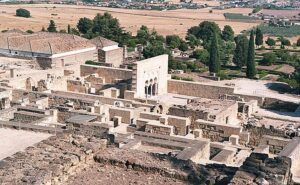

The “Shining City,” Medina Azahara, is an archaeological site situated on the outskirts of Cordoba, Spain. The fortified palace is one of the most prominent Islamic monuments.
It was constructed by Abd ar-Rahman III and served as a political, administrative, and cultural centre of the Umayyad Caliphate of Córdoba.
It featured palaces, administrative buildings, gardens, and other artistic structures that reflected the cultural fusion of the time’s Islamic, Byzantine, and Visigothic influences.
However, due to the persisting economic challenges and political instability, Medina Azahara fell into a decline.
The site was then rediscovered in the early 20th century and was preserved by the UNESCO World Heritage Site. Today, thousands of visitors to the Shining City every year.
Aljafería Palace
The Aljafería Palace (Palacio de la Aljafería) is a historic palace in Zaragoza, Spain. The palace’s construction began in the 11th century during the period of Muslim rule in the Iberian Peninsula.
It was built during the Taifa era, when the region was divided into various small Muslim kingdoms.
The Aljafería Palace was constructed as a fortified residence for the Banu Hud dynasty, specifically for Al-Muqtadir, the ruler of the Taifa of Zaragoza at the time.
The architectural design of Aljafería Palace reflects the Mudejar, Moorish, and Islamic cultures. The palace has thick walls, battlements, and sky-touching towers.
After the Christian Reconquista of Zaragoza in the 12th century, the Aljafería Palace underwent modifications to adapt it to the needs and preferences of the Christian rulers.
In subsequent centuries, the palace served various purposes, including as a royal residence, military barracks, and government building.
Primate Cathedral of Saint Mary of Toledo
The Primate Cathedral of Saint Mary of Toledo is a Roman Catholic Church in the city of Toledo in Spain. Toledo Cathedral’s construction began in 1227 CE.
The 60-metre-wide and 120-metre-long architectural structure featured Gothic, Renaissance, and Baroque elements.
Toledo Cathedral was built on the site of a former Visigothic church and a later Islamic mosque, symbolising the religious history and transitions of the city.
Toledo Cathedral houses numerous artistic and architectural treasures. Crossing the entrance, you will witness exquisite stained glass windows, elaborate altars, sculptures, paintings, carvings, 72 vaults, and 88 pillars.
The interior is known for its grandeur and remarkable acoustics, making it a venue for various religious ceremonies, cultural events, and musical performances.
One of the most famous features of the cathedral is its ornate High Altar, created by sculptor Alonso Berruguete and architect Enrique Egas.
Madinat al Zahra
Also called Medina Azahara, Madinat al-Zahra is a fortified historical site in the western region of Cordoba, Spain. It was a royal palace city and the administrative centre of the Umayyad Caliphate in the 10th century.
The site was constructed during the reign of Caliph Abd al-Rahman III (912–961 AD) and symbolised the caliphate’s power and opulence.
Madinat al-Zahra was intended to be a grand city that showcased the wealth, culture, and authority of the Umayyad rulers.
The city featured impressive architecture, expansive gardens, administrative buildings, residential areas, and lavish palaces, all built on a terraced hillside overlooking Córdoba.
The construction of Madinat al-Zahra started around 936 AD and continued for decades.
Unfortunately, the grandeur of Madinat al-Zahra was short-lived. The city was largely destroyed during the civil wars and conflicts that followed the fall of the Umayyad Caliphate.
Over time, the site was buried under layers of earth and forgotten. It wasn’t until the 20th century that archaeological excavations began, and researchers discovered the impressive remnants of the once-splendid city.
Castillo Arabe
Castillo Arabe translates to “Arab Castles built in Spain.” Having a distinctive architecture, Castillo Arabe served as a defensive structure, cultural symbol, and centre of governance during the medieval period. A few of the popular Castillo Arabe are listed below:
- Castillo Arabe in Alora: Perched atop a hill in Alora, the Castillo Árabe was developed in the 9th Offering beautiful views of the countryside, the fortress is also called “Cerro de las Torres.”
- Castillo Arabe in Motril: The palace is located in Motril. Even though not the original structure, the coastal fortress was built in resemblance to the real Arab palace.
- Castillo Arabe in Siurana: This was developed in the 12th century in Tarragona province. The castle’s remains narrate stories of a time when cultures converged, leaving an indelible mark on the region.
- Castillo Arabe in Constantina: Tucked away in the heart of Andalusia, the Castillo Árabe in Constantina stands as a silent guardian of Islamic history. Tourists can climb to the castle’s top and see the breathtaking view of the city.
- Castillo Arabe in Olvera: It is located in the province of Cadiz and was constructed in the late 12th century in the Nasrid-era. The castle
What City in Spain Is Arab Influenced?
Not one but several cities in Spain are Arab influenced, including Cadiz, Toledo, Malaga, Granda, Seville, Zaragoza, and Cordoba.
The Arab influence can be seen in Spain’s music style and instruments, technological innovations, literature, Maths, use of chickpeas, rice, spices, herbs, language, and architectural patterns and designs.
The Viana Palace
The Viana Palace, also known as the Palacio de Viana, is a historical palace located in the Santa Marina neighbourhood of Cordoba, Spain.
Surrounded by a marvellous garden and 12 stunning patios, the Viana Palace is a mix of Morish, Gothic, Renaissance, and Baroque architecture.
One of the most notable features of the Viana Palace is its stunning interior, with intricately decorated rooms, grand halls, and various art collections, including paintings, sculptures, and furniture from different periods.
Mosque of Christ of the Light (Mezquita Del Cristo De La Luz)
The Mosque of Christ of the Light (Spanish: Mezquita Del Cristo De La Luz) can be found in Toledo, Spain. The mosque was originally built in the year 999 AD during the Islamic Caliphate of Córdoba, the reign of Caliph Al-Hakam II.
The mosque was initially known as the “Mosque of Bab al-Mardum” (Mezquita de Bab al-Mardum or Mezquita del Salvador) due to its location near the Bab al-Mardum gate of Toledo.
The architectural style of the mosque reflects the distinctive features of Islamic design, with horseshoe arches, geometric patterns, and decorations.
After Toledo was recaptured by Christian forces in the 11th century, the mosque was consecrated as a Christian church.
During this conversion, some Christian elements were added to the building while maintaining its original Islamic architectural features.
A small apse was added to the Mihrab to create a more Christian-style sanctuary. The mosque’s name was changed to the “Mosque of Christ of the Light” (Mezquita Del Cristo De La Luz) to emphasise its new religious identity.
Calahorra Tower
Calahorra Tower is a fortified gate tower in Cordoba, Spain. The tower’s name, “Calahorra,” is derived from the Arabic word “Qal’at al-Hurra,” which means “Fortress of the Christian Lady.”
The tower was constructed in the 12th century by the Almohad dynasty.
The tower is an iconic landmark of Córdoba and consists of several levels, including fourteen chambers that once served various purposes, such as housing military personnel and prisoners.
La Madraza Granada
Built in 1349, La Madraza, Granda, served as an Islamic educational institution. It was established by Sultan Yusuf I and was designed to provide advanced education in various disciplines of Islamic knowledge, including theology, law, medicine, and literature.
The building is a beautiful example of Nasrid architecture, characterised by intricate stucco decoration, colourful tile work, and architectural elements that showcase exquisite craftsmanship.
It features a central courtyard, classrooms, a fountain, and prayer halls.
La Madraza Granada is currently open to the public as a museum, offering unique Granada experiences and allowing tourists to explore and learn about its religious significance.
The Generalife Palace
The Generalife Palace (Palacio de Generalife) is a historic architectural complex in the Alhambra, a renowned palace and fortress in Granada, Spain.
The Generalife was originally utilised as a leisure retreat for the Nasrid rulers. The Generalife Palace comprises exquisite gardens, courtyards, and fountains.
Patio de la Acequia is one of the most iconic areas of the Generalife. It features a long central water channel, fountains, and maintained horticultural elements. “Acequia” refers to the irrigation channels that bring water to the gardens.
The name “Generalife” is said to have originated from the Arabic words “Jannat al-Arif,” meaning “Garden of the Architect” or “Architect’s Garden.”
Gormaz Castle
Renowned as Castillo de Gormaz or Fortaleza de Gormaz, the grand palace was developed in 965 CE. Overlooking the Duero River, the Gormaz Castle consists of 1.2 kilometres of walls, countless towers, and defensive structures.
Over time, the strategic importance of the castle diminished, and it eventually fell into disuse. However, efforts have been made to preserve and restore the castle.
Today, tourists can travel to the Gormaz Castle while enjoying the panoramic views of the surrounding countryside.
Arabic Cities in Spain
Spain’s Arabic cities offer immersive glimpses into the country’s past, celebrating the art, architecture, and culture of Al-Andalus.
While Granada’s Alhambra showcases Nasrid dynasty artistry and stunning views, Mezquita of the inaugural capital, Cordoba, represents Islamic and Christian design.
Furthermore, the Alcázar in Seville blends Moorish and Gothic styles, whereas Toledo’s “City of Three Cultures” label reflects its fusion of Islamic, Jewish, and Christian influences.
Zaragoza has the famous Aljaferia Palace, and Cadiz’s maze-like streets narrate tales of the Umayyad era.
Summary – Islamic Historical Places in Spain
The Islamic civilisation’s presence in Spain for eight centuries left behind rich artistic and architectural heritage.
This legacy includes palaces, mosques, and fortresses that showcase that era’s advanced development and artistic sophistication.
These structures continue to adorn Spanish cities and are among Europe’s most visited monuments for halal travel, serving as a reminder of the shared history and cultural connections with Arabs

